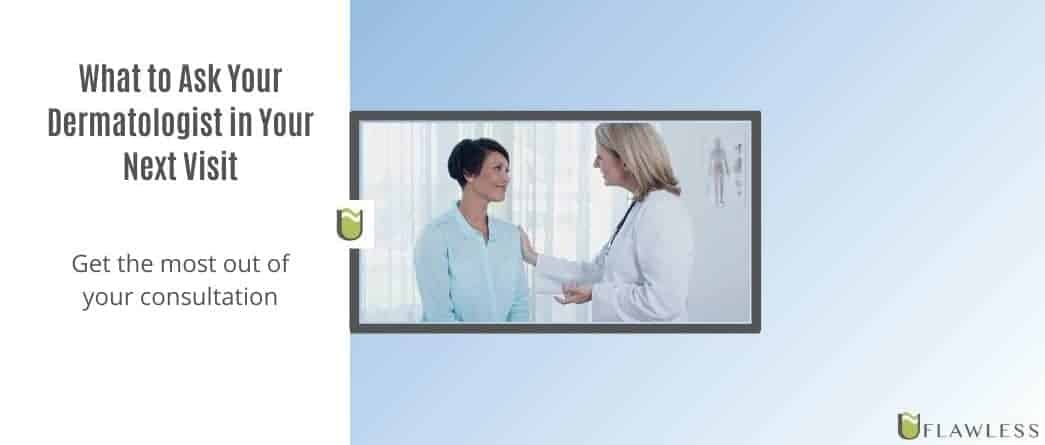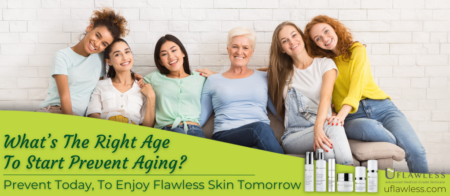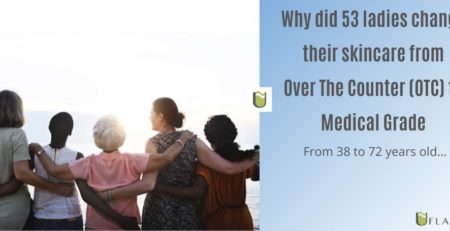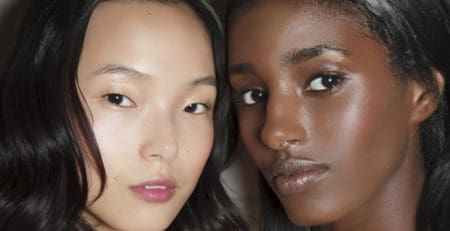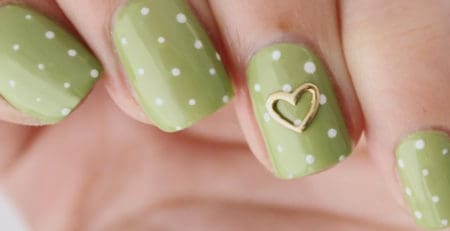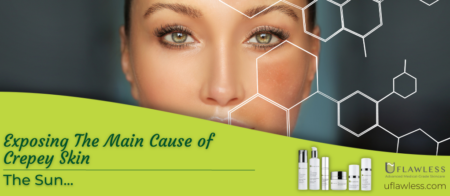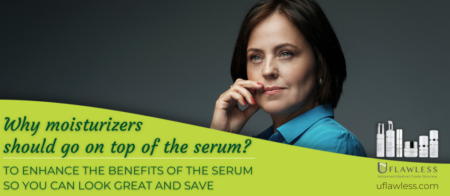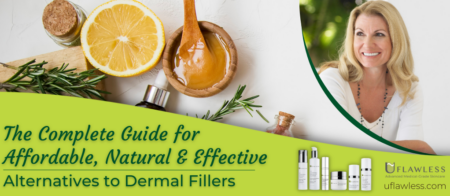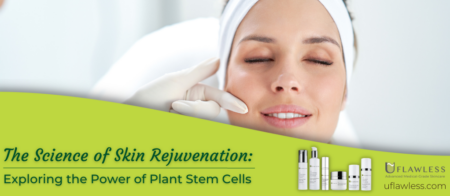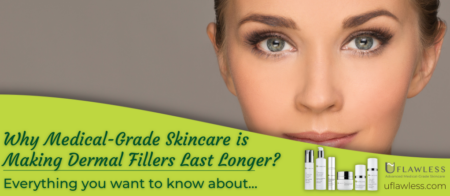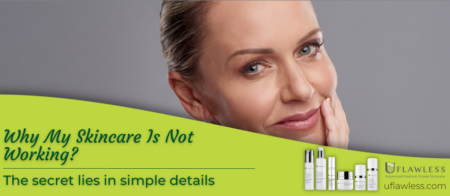What to Ask Your Dermatologist on Your Next Visit
It’s highly recommended to check in with a dermatologist annually. Wondering what to ask your dermatologist on your next visit?
While some might argue it’s a tad excessive, given that our skin is our largest organ and it’s constantly interacting with external elements, it’s essential to offer it due attention.
Heading to your dermatologist armed with the right questions ensures you maximize the value of your visit.
It’s all about getting your money’s worth.
A professional perspective will guide you in defining your skincare objectives and staving off potential issues based on age and environmental influences.
For a fruitful conversation during your dermatologist appointment, consider these insightful questions:

What is the best skincare routine for my skin type? First Question to Ask Your Dermatologist
This is a fundamental smart question, which often delves into a deeper analysis of your current skincare arsenal and practices.
To get the most out of your consultation, it’s imperative to have a detailed inventory of your skincare products, especially their active ingredients.
We recommend capturing photos of the ingredient lists for quick access during your appointment.
Such diligence will empower your dermatologist to precisely evaluate the efficacy of your regimen, highlighting potential synergies and suggesting improvements tailored to your unique skin needs.
A proper skincare routine should have at least 3 steps:
- Cleanse – Where the skin is prepared to receive all the nutrients in the upcoming steps. The clearer the pores, the better nutrient absorption. That’s why is very important a cleanser that can remove debris and gunk from the skin.
- Treat – Serums are the number one products that should be considered in this important step. Here your skin is receiving all the nutrients to create the so desired magic. Anti-Aging Serums, Anti-Acne, or Brightening… It’s a matter of understanding your primary goal.
- Moisturize – It’s the final step, as important as the previous two. Here the skin gets sealed… Trapping water into the skin cells so the nourishment keeps longer, enhancing all the benefits from the serum.
Should I Be Concerned About Any Particular Moles?
If you have maintained a consistent relationship with your dermatologist, they would likely have a chronological record of your skin’s evolution, especially concerning moles and potential skin anomalies.
It’s a very smart thing to ask your dermatologist on your next visit, about moles that may potentially be a concern.
Such continuity enables dermatologists to detect minute changes that could signify the early stages of melanoma or other skin conditions.
It’s advisable to request copies of these photographic records.
Not only does this empower you with the knowledge of your skin’s history, but in scenarios where you might need to consult a different dermatologist – perhaps due to relocation or other circumstances – you’ll have this vital documentation on hand.
From a scientific perspective, moles are benign skin growths that arise from melanocytes, the cells that produce the pigment melanin.
While most moles are harmless, changes in size, color, shape, or texture can be indicative of melanoma, a malignant form of skin cancer.
Early detection and diagnosis of melanoma are paramount, as it greatly elevates the success rate of treatments.
The timely identification and removal of atypical moles or early-stage melanomas can, in many cases, prevent their progression into more advanced, harder-to-treat stages.
Therefore, regular mole checks and dermatological assessments are essential components of proactive skincare and health maintenance.
Which Sunscreen Formula Is The Best For My Skin Type?
Every dermatologist, irrespective of geographic location, will inevitably broach the topic of sunscreen—unless you beat them to it.
And it’s not merely a routine; it underscores a topic of paramount importance in skincare.
Sunscreen isn’t a seasonal product—its relevance transcends summer or winter.
Rather, it should be an integral component of your daily skincare ritual.
The sun, with its UVA and UVB rays, is the primary culprit behind premature skin aging.
- UVA rays penetrate deep into the skin’s thickest layer, causing premature skin aging and wrinkling (photoaging), and contribute to skin cancer.
- UVB rays, on the other hand, usually burn the superficial layers of your skin and play a key role in the development of skin cancer.
- HEV rays – aka Blue Light – High Energy Visible light, which refers to the higher-frequency, shorter-wavelength part of the visible spectrum.
This light is emitted from multiple sources, most commonly from the sun, but also from our digital screens such as smartphones, tablets, computers, and LED lighting.
It’s this persistent exposure to ultraviolet rays that underscores the necessity of daily sunscreen application, both for its anti-aging benefits and as a proactive measure against skin malignancies.
However, sunscreens are not a one-size-fits-all proposition.
The optimal formula for you will align with your unique skin type and needs.
Modern formulations often incorporate HEV protection with antioxidants, enhancing their efficacy by neutralizing free radicals generated from sun exposure and environmental pollutants.

HEV Effects on the Skin:
- Premature Aging: Studies suggest that HEV light can penetrate deeper into the skin compared to UVA and UVB rays. It has been implicated in causing oxidative stress in the skin, which can lead to premature aging. Oxidative stress refers to an imbalance between free radicals and antioxidants in the body, leading to cellular damage.
- Pigmentation: There’s evidence to suggest that prolonged exposure to HEV light can increase the production of melanin, leading to changes in skin pigmentation, particularly in individuals with darker skin types.
- Free Radical Production: Blue light exposure may increase the production of free radicals in the skin, which can damage the skin’s DNA, proteins, and lipids. This can lead to loss of skin elasticity, dryness, and the increased appearance of fine lines and wrinkles.
HEV Effects on the Eyes:
- Digital Eye Strain: The most immediate effect of prolonged exposure to HEV light from digital screens is digital eye strain or computer vision syndrome. Symptoms include dryness, itchiness, blurred vision, and headache.
- Potential Risk for Age-related Macular Degeneration (AMD): The retina, particularly the macula, is susceptible to damage from blue light. While the direct correlation between screen time and AMD is not conclusively proven, some studies suggest that overexposure to blue light might increase the risk of developing AMD later in life.
- Disruption of Sleep Cycle: Blue light affects the secretion of melatonin, the hormone that regulates sleep. Exposure to blue light, especially during the evening, can disrupt our natural sleep-wake cycle, making it harder to fall asleep.
While we are only beginning to understand the full scope of blue light’s effects on our health, it’s evident that both our skin and eyes need protection from its potential harm.
When visiting your dermatologist, bring along your current sunscreen.
This facilitates a comprehensive assessment, ensuring you receive tailored recommendations and feedback on its suitability for your skin type and lifestyle.
Protective Measures Against HEV Light:
- For the Skin: Wear broad-spectrum sunscreens that protect against HEV light. Some sunscreens now include specific formulations or ingredients, like iron oxides, designed to offer protection against blue light. Incorporating antioxidants in skincare routines, such as vitamins C and E, can also help neutralize the free radicals generated by blue light exposure.
- For the Eyes: Use blue light-blocking glasses when working on screens for extended periods. Many digital devices also offer “night mode” settings that reduce the amount of blue light emitted.
- Limit Screen Time: Take regular breaks when working on computers or other digital devices. The 20-20-20 rule suggests taking a 20-second break to view something 20 feet away every 20 minutes.
Here’s a very good suggestion for a FULL Broad-Spectrum Sunscreen:
For Persistent Breakouts, What’s Causing Acne on My Face?
Acne, especially when experienced beyond the adolescent years, can be a complex condition influenced by various physiological, environmental, and lifestyle factors. Here’s a more in-depth look:
- Hormonal Fluctuations: In adults, especially women, hormonal changes can significantly impact acne development. For instance, conditions such as Polycystic Ovarian Syndrome (PCOS) can lead to an overproduction of androgens (male hormones), which can stimulate excessive sebum production and result in acne. Changes in hormone levels due to menstruation, pregnancy, or the use of oral contraceptives can also contribute to breakouts.
- Dietary Influences: Recent studies have shown a potential link between diet and acne. Foods with a high glycemic index (such as sugary snacks and beverages) may exacerbate acne in some individuals. Additionally, dairy products might play a role in triggering acne, though the research is still inconclusive.
- Cosmetic and Product Use: Not all skincare and makeup products are created equal. Products that are comedogenic can clog pores and lead to acne formation. Ingredients like lanolin, isopropyl myristate, and certain oils can be problematic for some skin types.
- Sweat and Environmental Factors: Sweat, when trapped under occlusive clothing or headgear, can mix with skin oils and lead to acne. Additionally, pollutants and dirt from the environment can accumulate on the skin and contribute to breakouts.
- Cleansing Practices: Over-cleansing or using harsh scrubs can strip the skin of its natural oils, leading the skin to produce even more oil in compensation. This can result in a cycle of breakouts. Conversely, under-cleansing can allow the buildup of oil and dead skin cells, which can also cause acne.
- Stress: Chronic stress can lead to hormonal imbalances which, in turn, can trigger acne. Stress-induced inflammation can also exacerbate skin conditions, including acne.
- Medications and Medical Conditions: Certain medications, including lithium, corticosteroids, and some antiepileptic drugs, can lead to acne breakouts. Medical conditions, apart from PCOS, like certain forms of adrenal gland disorders, can also result in acne.
During a dermatological consultation, the practitioner will assess these factors, asking pertinent questions and conducting a thorough skin examination.
They may also suggest diagnostic tests, such as blood work, to identify any underlying conditions or hormonal imbalances.
With a comprehensive understanding of the causes, a dermatologist can then customize an effective treatment plan, both to address current breakouts and to prevent future ones.
What are the best products to exfoliate the skin: Another Question To Ask Your Dermatologist
The ideal exfoliating product largely depends on your skin type, concerns, and the desired intensity of exfoliation.
Here’s a rundown of some of the best products used for exfoliation across different categories:
Physical Exfoliants:
-
- Face Scrubs: Products with finely milled particles, such as the X3 UPolished Exfoliating Cream
- Exfoliating Brushes: Devices that may offer gentle exfoliation when paired with your regular cleanser.
- Microdermabrasion Kits: At-home versions of the professional treatment.
Chemical Exfoliants:
-
- AHAs (Alpha Hydroxy Acids): Effective for sun-damaged and dry skin. Glycolic acid (found in products X3 Refining Glycolic Gel Pads.
- BHAs (Beta Hydroxy Acids): Ideal for oily and acne-prone skin, as they can penetrate oil to exfoliate inside the pore. Salicylic acid is a popular BHA found in products like X9 Advanced Exfoliating Cleanser.
- PHA (Polyhydroxy Acids): Less irritating than AHAs and BHAs and offer similar benefits. Often found in products formulated for sensitive skin.
- Retinoids: They stimulate cell turnover and are also used for anti-aging. Products like X3 Age-Defy Retinol PM Serum.
- Enzymatic Exfoliants: Use enzymes, often from fruits like pomegranate to gently dissolve dead skin cells. Good examples include the X3 UPolished Exfoliating Cream.
Natural & DIY Exfoliants:
-
- Coffee Grounds: Often used in DIY body scrubs.
- Oatmeal: Provides a gentle exfoliation suitable for sensitive skin.
- Sugar and Honey: A classic DIY face scrub combo.
When introducing any exfoliating product into your skincare routine, it’s vital to start slow and monitor your skin’s reaction.
Over-exfoliation can lead to sensitivity, redness, and a compromised skin barrier.
Always ensure you follow up exfoliation with sunscreen, as your skin will be more sensitive to UV rays.
Lastly, consult with a dermatologist or skincare professional about the best products tailored to your specific needs and concerns.
Medical-Grade Skincare vs. Over-the-Counter: What’s the Real Deal?
Navigating the world of skincare can be akin to walking through a maze, especially when confronted with the choice between medical-grade products and over-the-counter (OTC) offerings.
What to ask your dermatologist on your first visit, should contemplate getting to know more about Medical-Grade Skincare.
It’s important to remember that just because a dermatologist has a skincare line or promotes certain products, it doesn’t automatically mean they’re of medical-grade quality.
Here’s what truly delineates Medical-Grade Skincare from its OTC counterparts:
- Clinical Testing: For a product to be genuinely medical-grade, it must undergo rigorous clinical testing. These tests ensure not only that the product’s ingredients are biocompatible with human skin but also validate the product’s efficacy claims. This means that if a serum claims to reduce wrinkles or boost collagen production, there’s scientific data backing up those claims.
- Purity and Concentration of Ingredients: Medical-grade products typically have higher concentrations of active ingredients. For instance, a medical-grade vitamin C serum might have a higher percentage of pure ascorbic acid than an OTC one. An essential criterion is a purity level, with many medical-grade products boasting levels upwards of 80%. This ensures you’re getting a potent dose of the beneficial ingredients.
- Formulation Oversight: True medical-grade products are overseen by licensed dermatologists or skincare professionals throughout the formulation and manufacturing processes. This oversight ensures that the product meets stringent quality standards and is formulated with a deep understanding of skin physiology.
Advantages of Medical-Grade Skincare:
- Targeted Solutions: These products are often formulated to address specific skincare concerns like hyperpigmentation, severe acne, or advanced signs of aging. They are usually more potent than OTC products, providing faster and more noticeable results.
- Advanced Delivery Systems: Medical-grade products often employ sophisticated delivery systems that ensure active ingredients penetrate the skin more effectively. This ensures that ingredients like peptides, retinoids, or growth factors reach the deeper layers of the skin where they can exert their benefits.
- Safety and Efficacy: Given the rigorous testing and professional oversight, these products generally have a good safety profile. They’re effective but also formulated to minimize irritation or adverse reactions.
- Consultation Advantage: Medical-grade products are often accompanied by professional guidance. When you invest in these products, you’re also benefiting from the expertise of a skincare professional who can advise on the best way to use them and incorporate them into your routine.
While medical-grade skincare can offer numerous benefits, it’s also typically more expensive than OTC products.
Therefore, it’s essential to consider your skincare goals, and budget, and consult with a dermatologist or esthetician to determine the best products for your needs.
The Gold Standard in Skincare: UFlawless Advanced Medical-Grade Skincare
Seeking genuine transformation in skincare? Your search culminates with UFlawless Advanced Medical-Grade Skincare.
Why compromise when you can have the zenith of purity and efficacy?
UFlawless proudly presents an unmatched 99.9% purity level in its active ingredients. This isn’t a mere statistic—it’s our solemn commitment.
A vow assuring you’ll observe groundbreaking results in just one week.
While most over-the-counter products merely scratch the surface, UFlawless delves deep.
It powerfully penetrates to stimulate your skin’s innate collagen, elastin, and hyaluronic acid production.
Where other brands splash millions on glitzy Superbowl ads, our dedication lies elsewhere.
We channel our resources into pioneering technology and meticulous research, ensuring the epitome of skincare quality.
Our dedication is mirrored in our client loyalty—with an impressive 95% returning for more, solidifying their trust with each purchase.
Still, harboring doubts? We don’t blame you. The world of skincare is filled with exaggerated promises.
That’s why we’re taking a step further. We invite you to witness the UFlawless revolution firsthand with our FREE SAMPLES.
And to sweeten the deal? All our products come with a 100% Satisfaction Guarantee.
Try them out, use the entire bottles for 30 days, and if you’re not entirely captivated by the results, we promise a full refund—no questions asked.
All we ask upfront is a modest $5.95 for Shipping & Handling.
For those with discerning tastes in skin care, our samples will be a revelation, illuminating the splendor of 99.9% purity.
Included in our sample offerings:
- X3 Medical-Grade Anti-Aging Routine: Rediscover a youthful lifted appearance.
- X3 Dermal Filler in a Bottle Routine: Experience instant plumpness, elasticity, and tone.
- X9 Advanced Brightening Routine: Achieve an ethereal luminosity, sans hydroquinone.
Still, Intrigued? TRY THE FREE SAMPLES
Join us on a transformative skincare odyssey. A luminous tomorrow awaits!
Try all these amazing products with a 100% satisfaction guarantee!
-
-
X3 Dermal Filler in a Bottle Routine |
Original price was: $339.00.$261.00Current price is: $261.00.


